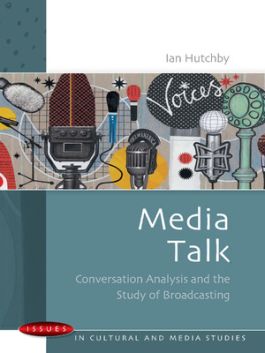Media Talk: Conversation Analysis and the Study of Broadcasting
- Access the eBook anytime, anywhere: online or offline
- Create notes, flashcards and make annotations while you study
- Full searchable content: quickly find the answers you are looking for
Note on Data and Transcription
Discovering Media Talk
Analysing Media Talk
Television Talk and Audience Participation
Audience Participation Television and Public Discourse
The Spectacle of Confrontation
Radio Talk
Language, Interaction and Power on Talk Radio
Distributed Expertise: The Discourse of Advice-Giving Shows
Broadcasters and Politicians
News Interviews: Journalists and Politicians On the Air
Political Rhetoric and Televised Debate
Postscript
Media Talk and Conversation Analysis: Some Concluding
Glossary
References
Beginning with the observation that talk is central to all genres of radio and television, Ian Hutchby examines the forms of speech used by broadcasters as their primary means of communicating with audiences. He looks at a range of media forms and genres, including televised audience debates, confrontational TV talk shows such as Oprah Winfrey and Ricki Lake, open-line talk radio shows, advice-giving broadcasts, news interviews and political panel discussions.
Hutchby argues that the study of talk provides insights into the very nature of mass communication, and invites the reader into further consideration of a range of important issues, such as the relationship between broadcasters and audiences, and the public role of media output.
The book not only describes the role of media talk but also provides detailed examples of analytical tools. It is key reading for students on courses in language and the media, media discourse, communication and cultural studies.

